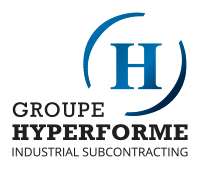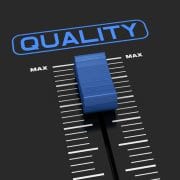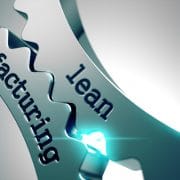In this article, we delve into the various risks associated with industrial subcontracting and how they can affect your business. In addition, we explore strategies to mitigate them so that you can safeguard your company’s success in the ever-changing landscape of subcontracting.
Quality management is a complex task within the organizational process. Needless to say, ensuring comprehensive and effective risk management within the industrial subcontracting sector is undoubtedly a real challenge. Indeed, the latter may prove to be complex at different points, and the slightest fault could lead to a production problem and a failure to fulfil company’s contractual obligations.
Hence, a quality control specialist is mandatory to ensure the quality of industrial subcontracting projects. This team member must have perfect command of the achievement context as well as a thorough understanding of the required skills and performance criteria as indicated in the contract documents. To succeed, he needs to have several key skills, of which the three most important ones are:
1- Understanding of the Technical and Regulatory Requirements:
In order to properly perform the tasks according to the desired requirements, the quality manager must recognize all technical aspects of the project. He must also be able to provide an accurate interpretation of the requirements and procedures described in the project specification and of the turnaround times of each phase of the industrial subcontracting project. Moreover, he needs to carefully review all documentation related to good manufacturing practices and the applicable regulations, especially in the case of an export product, for which quality requirements are becoming increasingly stringent.
That’s not it. He must also ensure that the internal procedures of the company for which the final product is intended are rigorously applied, and that the appendices of such procedures are well-defined, leaving little room to uncertainty, even less to improvisation.
2- Professional Interaction:
The quality manager must own technical and methodological knowledge, yet he also needs to build interpersonal relationships by acting accordingly depending on the people he/she is interacting with, as well as the situations, while being able to listen, to help, to motivate, and to coach the staff in charge of the execution of the various operations. Thus, his role is to maintain a clear and effective communication between employees, while using the appropriate terminology, both orally and in writing. He also has the duty to clearly define the role and responsibility of each team member in order to ensure effective coordination between them, hence, promoting spirit of collaboration and professional growth.
Indeed, work-related stress experienced by workers in the manufacturing sector is high. Yet, it is even intensified in the event of a communication failure. The contribution of the quality manager is therefore very important within the team: a valuable input in terms of providing a fair and precise assessment of all situations as well as making prompt and sound decisions.
3- Samples Analysis and Review of the Inspection Reports:
Based on the guidelines and standardized test protocols, the quality manager must be able to perform physical and / or chemical analyzes (on some projects) in order to ensure the compliance of the product quality with the technical requirements indicated in the project specification. Let’s say, for instance, the quality control related to the welding department is under concern, the person in charge must have specific expertise in welding supervision as well as in drafting quality monitoring and follow-up reports, such as welding reports, manufacturer’s auditing procedures, operating procedures, the detailed analysis, and the final manufacturing report.
Inspection must be performed with care, precision, and above all, great objectivity. Results of the inspection are then verified, processed and compared with the expected ones. Next, the quality manager drafts an inspection report that is meant to be sent to the Director of Operations. The latter performs a thorough review of the current methods of execution in relation to the product specifications, with the aim of ensuring the best possible success for the industrial subcontracting project.
What is the Hyperform Group?
The Hyperform Group is a team specialized in outsourcing services to manufacturers, with a unique offer in Quebec, Canada and worldwide.
Hyperform Group is your best ally to improve the quality of your products and to find new innovative ideas. Please feel free to contact us to discuss your upcoming projects, and score great business deals.
To read other related articles, click here.
EnregistrerEnregistrer
Subcontracting is a key element for any company wishing to compete effectively within the industrial production sector; it affords you the external know-how and additional production capacity essential to your growth. However, with the wide range of services available, it may be difficult to identify which one best suits your needs. In order to assist you, we have listed 8 industrial subcontracting services that you absolutely must know to keep your business competitive.
In the manufacturing sector, a growing number of businesses make use of subcontracting in order to reduce their production costs, offer high-quality products, and fulfill all their orders.
Subcontracting also accelerate their business growth and increase their income, but it must be carefully planned. An exhaustive description of the technical work to be carried out is therefore mandatory to ensure the qualitative success of each project. Here are the four documents you need to succeed your subcontracting project: Read more
Waterjet cutting is a surprising process! If we were to look at the machines working under a microscope, we could see that it is a mechanical process that rips through the material, which is a unique process.
And because the waterjet is very precise, the cutting process can be used to cut a variety of materials used in many industries. In fact, this process is used throughout the world, in fields such as aerospace, transportation, scientific research, the agri-food and other industries.
Sharing her expertise with us is Annie Caouette, Vice-President with Hydro Coupe, who speaks about the benefits of this multi-faceted technology.
Inspired by Toyota’s management method, the 14 Lean Management Principles enable an organization to become more effective and efficient. Based on the respect for people and continuous improvement, the 14 Lean Management Principles are grouped into 4 sections.
To explain it in more depth, Claude Robichaud, a partner of Groupe Hyperforme, discusses some of the advantages of applying these management processes in his industry.
LONG-TERM PHILOSOPHY
- Think in the long-term:
This first process explains that it is important to base your management decisions on a long-term philosophy, even at the expense of short-term financial goals.
THE RIGHT PROCESS WILL PRODUCE THE RIGHT RESULTS
- Flow:
This involves creating a continuous process flow to bring problems to the surface. For example, this can reduce waste.
- Pull flow:
Use “pull” systems to avoid overproduction and adjust according to true demand.
“A pull system organizes work in stations rather than on a production chain. It is especially useful for assembly factories. It identifies bottlenecks and helps avoid waste of time, energy and inventory,” explains Claude Robichaud.
- Level out the workload (heijunka):
This fourth point requires levelling out the workload and maintaining production pace. When a factory can operate this way, it is much easier for employees to complete their tasks.
- Automation and human touch:
This method targets building a culture of stopping to fix problems, to get quality right the first time. In Mr. Robichaud’s case, this includes an analysis of initial waste. In other words, before beginning production of a given piece, he conducts a series of tests and analyzes the ‘rejects’ to avoid any errors.
- Standardized tasks:
Standardized tasks and processes are the foundation for continuous improvement and employee empowerment. The concept requires the introduction of a minimum of rules and procedures to facilitate the execution of tasks.
- Visual controls:
This requires using visual controls so no problems are hidden. According to Mr. Robichaud, you don’t need high-technology equipment to apply this procedure successfully.
“We use tables that everyone has access to. This makes tracking easier for everyone,” he explains.
- Reliable technologies and methods:
The objective is to integrate only reliable, thoroughly tested technology that serves your people and processes.
For example, Mr. Robichaud explains that at Falpaco, they rely on PPAP (Pre-production Approval Part). This includes documents issued to customers that contain all of the test plans conducted before beginning production.
ADD VALUE TO THE ORGANIZATION BY DEVELOPING YOUR PEOPLE
- Grow leaders:
This method includes identifying those in a group who grasp the work and your philosophy and who can transmit it to others.
To succeed, Mr. Robichaud insists on the importance of giving employees the chance to discover their strengths and bring them to the company.
- Develop exceptional people:
This means developing exceptional people and teams who follow your company’s philosophy.
Mr. Robichaud explains that this process has nothing to do with a company’s hierarchy, but with the strengths of an individual. For example, a person who was formerly a plant director at Falpaco would be better as a coach helping their colleagues advance by passing on their management skills.
“The idea is to have as many people in the team who utilise their best talents,” explains Claude Robichaud.
- Consideration and respect for partners:
This approach is based on respecting your extended network of partners and suppliers by challenging them and helping them improve.
To apply this successfully, Claude Robichaud integrates many values such as respect, attention and collaboration. This enables him to maintain successful relationships where everyone gives their best for the customer.
CONTINUOUSLY SOLVING ROOT PROBLEMS DRIVES ORGANIZATIONAL LEARNING
- The importance of going and seeing for yourself to thoroughly understand the situation (genchi genbutsu):
The purpose of this principle is to promote face-to-face discussion between the manager and the operator. However, these discussions are shorter and allow both parties to express themselves and listen to each other on the spot.
- Make decisions slowly by consensus, thoroughly considering all options; implement decisions rapidly:
The president of Falpaco adds that it is important to invest in autonomy. If a person has the power to make a decision to have a project advance, they must not hesitate to take action!
- Become an organization that learns to learn better:
This approach requires becoming a learning organization that focuses both on relentless reflection (hansei) and continuous improvement (kaizen). For example, it can be by developing new skills or learning new techniques.
In conclusion
The Lean process is being increasingly adopted by organizations around the world. According to Mr. Robichaud, this provides several concrete advantages:
- A process for continuous improvement;
- A sense of belonging (both on projects and with the organization).
However, to complete the transition successfully, he suggests being properly informed, notably by a coach who will know how to provide the tools and methods adapted to your needs. Mr. Robichaud feels that it is a process that he will never regret.
Canada, thanks to its geographical proximity, is the natural partner of the United States, even though many experts said a few years ago that the future of the United States is in China. Some of them even advocated a total relocation of American manufacturing activity to China in order to reduce production costs and trade deficits. Despite this, the volume of trade between manufacturing companies on both sides of the border continues to grow, offering a variety of business opportunities, especially for US manufacturers and their subcontractors. Here are 3 reasons why:
Filling an order book is a technical endeavor that leaves no room for improvisation, especially in the manufacturing sector where competition is fierce.
Indeed, this economic sector faces the challenges of globalization of markets, fluctuations of currency and competition against emerging countries, forcing many manufacturers to continuously invest in machinery, equipment, innovation, research, and business development. Haplessly, the human and financial resources required are beyond the reach of many small and medium-sized manufacturing companies. By this premise, they are compelled to ceaselessly reinvent themselves if aspiring to stand out from the competition, and impose themselves on the market.
Here are 4 key points to achieve this goal:
1- Market Knowledge
When filling an order book, the process must be upheld by the knowledge of the marketplace, the economic context in which the company operates from, and sector forecasts of the upcoming five years. As technological advancements transform markets in a gleam of time, the manufacturing company must be prepared to anticipate all possible changes. And thanks to an acute and ready to target prospective clients sales strategy, it can position itself very quickly in the market.
2- Branding: The Art of Standing Out
With globalization and current competition, there is no place for a still and quiet manufacturer company, since communication absorbs new markets and guarantees, thus, prosperity and sustainability. Today is the day of the communicative company, first about itself, then about its products, its resources, and experiences of customers. This effective communication can strengthen its notoriety, and create an environment of confidence and sympathy that are favorable to its growth.
3- Smart Business Development
A loyal clientele delivers the flow of orders, but if the manufacturing company aspires to increase its revenues, or position itself strategically for development and growth, it needs strong development skills oriented towards the manufacturing industry. The particularity of this industry requires reading precise data indispensable to the promotion of the company in strategical areas. And the resort to experts’ help in industrial business development is one of the most effective ways to increase revenues while saving the costs of planning and implementing the sales strategy.
4- Business Combination
To handle the demands of a very competitive market, several manufacturing companies are making great efforts to increase their earnings and pursue their growth, trouble-free. By investing in new machines and technologically advanced equipment, they can increase their productivity. However, this is still insufficient to generate more profits. Indeed, in addition to production and operating costs, the charges to explore new markets are becoming increasingly difficult to meet, especially for small businesses. For this reason, some of them choose to be part of a business combination that provides its members with opportunities for strategic partnerships while providing them with a well-structured network and direct access to new markets.
Who Is Groupe Hyperforme?
Groupe Hyperforme is a cluster that offers a unique service in business development, to boost your sales and increase your income. Moreover, with their global industrial subcontracting solution, they aim to increase the productivity and performance of your company, while respecting high quality standards.
Contact Groupe Hyperforme for a free, no-commitment evaluation of your project.
To read more articles click here.
In the industrial sector, outsourcing can take on different forms. In most cases, it primarily involves subcontracting certain tasks that make up an integral part of the production process. But it may also involve less technical sectors, such as the sales force. However, entrusting your company’s prospecting and market development to a third party requires – for both parties – respecting a certain number of conditions for the success of this type of collaboration. These winning conditions can be identified across three poles: the client, the subcontractor, and the relational factors.
On the client’s side
For the client, the success of such an approach depends on respecting a few essential points:
- The effective involvement of the management throughout the entire process. The management team should regularly be informed about the smooth functioning of the collaboration through periodic progress reports.
- Solid definition of the goals. The client must logically be involved from the beginning in clearly defining the objectives assigned to the subcontractor.
- Proven trust in the subcontractor. Within the context of this type of outsourcing, the subcontractor shouldn’t just be considered a simple service provider. They should be treated as a full-fledged partner.
- Treat the subcontractor’s team like your own employees. Still following the partnership approach, the client should guarantee adequate treatment for this new team and encourage their integration within the larger entity.
- Ensure compliance with the contractual terms and define the frequency of the follow-up.
On the subcontractor’s side
For the subcontractor, the requirements for the success of such a collaboration are as follows:
- Agree on a clear action plan and the necessary tools for achieving it: prospecting and sales strategy (face to face, telemarketing, catalogues, digital strategies, etc.), customer relationship management process, etc.
- Provide adequate training to your employees to adapt to the scope of the company, its values, its image, and its size. The prospect or client who receives a representative of the company shouldn’t notice any difference.
- Clearly define roles and responsibilities.
- Constantly improve the quality of the service offered to the client, particularly when the contract is established over the long term.
- Know your client and their expectations well. Put like that, it seems simple. But it often takes real effort to properly pin down the client’s expectations and satisfy them.
- Emphasize your proven skills. It’s the skill and expertise of the service provider in a given field that adds value to this type of collaboration. If necessary, you should be able to answer the client’s different questions and offer the right solutions.
Success factors: relationships, network, and strategy
For successful outsourcing, it’s also important to consider the relational factors between the two parties. As with any collaboration between two distinct entities, outsourcing the prospecting and development activities of a manufacturing company involves establishing a framework that’s favourable and beneficial for both parties. With that in mind, Groupe Hyperforme offers professionals in this sector access to a solid and organized network of subcontractors, as well as proven sales strategies.
In an industrial sector where competition is heightened by the demands of competitiveness, being able to acquire customers and properly sell your products and services are real challenges for manufacturing companies. In this environment, the service offerings themselves play a key role, certainly. But the approach and the sales pitch are just as important, although they’re often overlooked by many players in the manufacturing field.
Whatever you may think of it, a product or service, as good as it is, is only rarely sufficient on its own to lead to a lasting collaboration – especially in the manufacturing field, where buyers or ordering clients have the last word. So how do you organize your pitch and choose your weapons to successfully carry out such negotiations?
Business intelligence, or how to put the odds in your favour
Business intelligence is one of the most important steps in a prospecting effort in the industrial sector. Consisting of an analysis of the market and the behaviour of its different players, this sales technique is, in effect, an effective decision-making tool. Thanks to various increasingly modern tools such as LinkedIn, it lets you build the relationship, refine your strategy, and determine the most suitable approach for successfully carrying out your business negotiations. Above all, maintain direct contact with the ordering client, and take the time to learn as much as you can about their real expectations, their particular demands, the potential causes of their dissatisfaction with their previous service providers, their values, etc. That way, you’ll always stay one step ahead during negotiations.
Know how to talk to the right person
Many large companies (especially industrial firms) have a very particular internal organization. Before setting out, try to identify and get acquainted with the decision-maker, or the ordering client – the person on whom the final decision generally depends. The idea here is obviously not to trample their other collaborators who are in your way. Rather, it’s a matter of clearly determining who to convince and what the potential barriers are to achieving your goal. It’s also an excellent way to spare yourself from having to repeatedly start again.
Know how to stay flexible
As the term implies, a business negotiation often involves concessions from both parties. When developing your initial offer (based on the information gathered), you should therefore consider giving yourself a little wiggle room. Renegotiating the price or the components of an offer is practically a reflex for most ordering clients. If you don’t seem open to dialogue from the outset, that can really put the brakes on any collaboration. On the other hand, being flexible should in no way mean questioning the fundamentals of your offer. If you give the impression from the start of wanting to sell your product or service “at any price,” you either risk selling out of it, or it will automatically lose value in the eyes of the customer. In both cases, your potential collaboration will be jeopardized.
An imperative: maintaining the business relationship
Since business development isn’t limited to the conclusion of an agreement, it’s important that your sales strategy guarantees, from the outset, the conditions for good collaboration between your respective companies. That obviously requires courteous, professional, and open dialogue, but it also involves keeping in contact through the appropriate choice of reactivation and exchange methods. Don’t forget that, in the manufacturing field, simplicity and functionality are essential.
Faced with the specifics related to the industrial environment, optimizing the strategy, the sales pitch, and the appropriate choice of business development tools are the best ways for a manufacturing company to stand out from the competition and convince ordering clients. When it comes to ensuring the best, most suitable sales techniques, Groupe Hyperforme is a partner of choice. Free yourself from the constraints of prospecting and trust a strong partner: Groupe Hyperforme.
Latest News
 What are the Advantages of E-Coating Compared to Other Coating Techniques?5 March 2024 - 16 h 13 min
What are the Advantages of E-Coating Compared to Other Coating Techniques?5 March 2024 - 16 h 13 min ACHIEVING DURABLE AND BEAUTIFUL FINISHES: HOW CAN THE QUALITY OF E-COATING BE TESTED AND ASSURED?5 March 2024 - 8 h 56 min
ACHIEVING DURABLE AND BEAUTIFUL FINISHES: HOW CAN THE QUALITY OF E-COATING BE TESTED AND ASSURED?5 March 2024 - 8 h 56 min Selecting the Right Finish for Your Project: How Does E-Coating Compare to Powder Coating?5 March 2024 - 8 h 50 min
Selecting the Right Finish for Your Project: How Does E-Coating Compare to Powder Coating?5 March 2024 - 8 h 50 min















